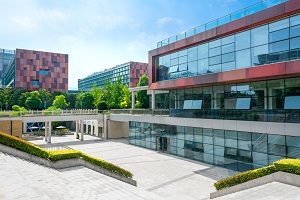

Some of these centers are losing anchors-just like enclosed malls-due to the current crisis of department stores. The retail in some mixed-use centers has struggled for a variety of reasons. Conventional retail in suburban malls is struggling, and that makes for a carrot-and-stick incentive that is driving more retailers into urban formats. The need for walkable urban places continues to grow, and this demand will drive planning and development for decades to come. Mixed-use urban centers can be seen as a glass half full or half empty, but overall, one could say the glass is more than half full. This development would not have happened if not for the urban retail, according to the Business Journal. All told, developers will surpass $350 million worth of investment and construct 1,248 apartments in the West End and neighboring parcels between 20. A final multifamily project will break ground this winter, adding another 207 apartments. But focusing on the struggles of the retail portion of the project ignores the fact that the area is red-hot with the development of apartments, hotels, and the largest suburban speculative office project since the recession.” Developers have completed 779 apartments around the West End since 2013 and are constructing 262 more. “The first phase, a 349,000-square-foot retail center, has lived a rocky life and still has a vacancy rate north of 25 percent.

Since then, it has struggled along with the shopping center/mall industry, according to the Minneapolis/St. The Shops at West End was hit economically by the Great Recession. The Shops at West End is “pretty much” the only walkable urban place outside of downtown that is available for major commercial development, according Sam Newberg, a commercial real estate analyst in the Twin Cities area.

Louis Park, Minnesota-just west of Minneapolis. Pros and cons of mixed-use centers are on display at the Shops at West End in St. Living spaces, offices, and restaurants in new urban centers in the suburbs tend to be very successful, but the retail has been less profitable in many instances. Retail is an essential part of a walkable urban center-and has been the case for as long as people have been selling goods in the marketplace. This commercial component is important because many new urban developments are planned or under construction, and most include retail. Mixed-use centers-often in suburban locations-continue to be built from the ground up in many communities across the US. This is one of a series of ongoing Public Square articles on the market, technological, and cultural transformation of the $5 trillion retail industry-and how it relates to a continued shift toward walkable, urban living.


 0 kommentar(er)
0 kommentar(er)
